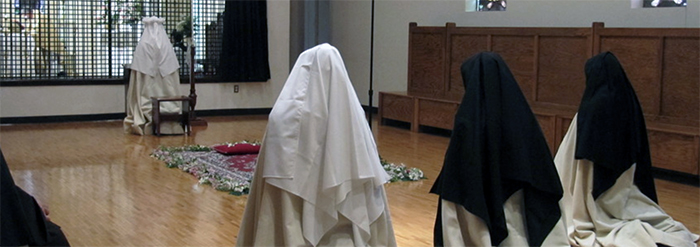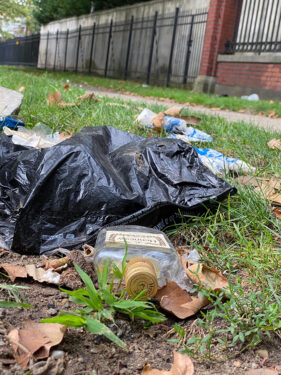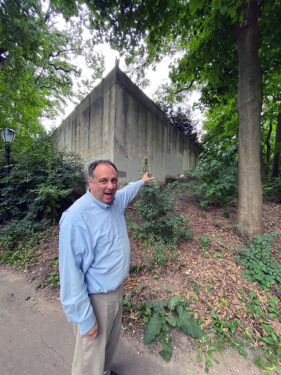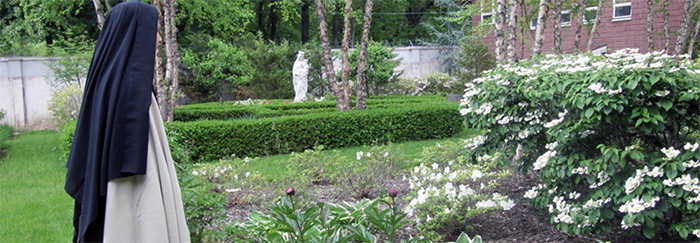
CYPRESS HILLS — A small community of Carmelite nuns living in a monastery on the Brooklyn-Queens border has cloistered themselves from the rest of the world, but not to escape it.
Rather, their mission is to quietly pray for the world, and the Church in particular, with special attention to the salvation of souls and the sanctification of priests. This work continues unfettered by the distractions of current events, pop culture, or the media.
As a result, the Monastery of Our Lady of Mount Carmel and St. Joseph on Highland Boulevard in Brooklyn is permeated with serenity.
That is, except on the weekends when next-door Highland Park undergoes a conversion from popular greenspace to a nighttime magnet for teenagers and young adults who come to party. Criminal activity ensues — including drinking and fighting — and music blasted from dueling car speakers rattles the monastery’s windows.

High cement walls shield the sisters from hooliganism, but the noise disrupts their prayers. Consequently, the Carmelites plan to relocate to a 13-acre plot near Scranton, Pennsylvania, that has been gifted to them. Although the actual move might take years to complete, the nuns are already sad to leave their current neighborhood and the Diocese of Brooklyn.
“We’ve been here since 2004,” said Sister Maria, who speaks for the community, in a recent telephone interview.
“And everyone in the neighborhood has been wonderful. And one thing is for sure — how we loved this diocese and the people,” she added. “But this [noise] problem has escalated over the past year. The police are also still trying as much as they can, but once they go, they come right back. It’s crazy.”
Since the nuns are cloistered, they only venture outside the monastery for essential tasks such as medical appointments, explained Jim Krug, who helps the sisters as a member of a lay group, the Carmelite Oblate Confraternity.
His regular job is teaching theology and religion at Kellenberg Memorial High School in Uniondale, New York.
Krug reiterated that the nuns have minimal contact with the outside world. Occasionally, he said, they receive guests — such as relatives or even Bishop Nicholas DiMarzio — in a special parlor with a metal grate separating them from the visitors.
Therefore, the sisters asked Krug to conduct a tour — inside and out — of the monastery. He pointed to graffiti and garbage on the sidewalk along Highland Boulevard, just outside the monastery’s walls. The discarded junk included an empty liquor bottle, fast-food wrappers, and a busted vaping pen.
The north wall of the monastery’s enclosure faces the park. Trails cut through the thick foliage and trees surrounding the walls. Numerous tissues clinging to the ground indicate people use the secluded spot as a public restroom.
But the exterior has also been the venue of another activity — Santería rituals including sacrifices of animals, usually chickens, Krug said. In addition, animal bones, makeshift altars, and statues have been left outside the walls, Krug said.

“They [Santeria practitioners] think there is some type of spiritual force here,” he explained. “Some kind of vortex. But of course, the sisters see it in a very different way. They see it as evil.”
Krug said the late-night partying picked up last year when the COVID-19 lockdowns forced clubs and bars to shut their doors. He said the New York Police Department appears to have stepped up their patrols, but problems persist.
“I’ll be here some nights, you know, helping with something, and, again, the speakers will be blasting,” he said. “And the walls will be shaking.”
The NYPD has promised to keep working to curb the disorder, according to police spokesperson Det. Sophia Mason.
“The Police Department will continue to monitor and maintain a presence inside of Highland Park,” Det. Mason said. “Additional resources are assigned to the area during the summer, including foot and scooter patrols.”
She added that local precinct commanding officers as well as Neighborhood Coordination Officers have a “direct line of contact” with community members and have met with them on several occasions.
“Officers have also conducted walk-throughs with community members to address any issues,” Det. Mason said.
Park Enforcement Patrol (PEP) officers are also working to help quell the clamor, said Charisse Hill, spokesperson for New York City Parks.
“Anecdotally,” she added, “we’ve observed on weekends that there can be high volumes of noise, illegal vending, and parking at this site, and our PEP officers are collaborating with NYPD to address these conditions.”
Also, Hill noted, Parks officials placed barricades, additional fencing, and boulders to restrict unauthorized access into the park.
Hill added that Parks officials were saddened to learn about the nuns’ plans to relocate.
“The Carmelite nuns have been a part of the Highland Park community for decades, and we wish them the best at their new location,” Hill said
Also sad about their departure is Bishop DiMarzio.
“They have been part and parcel of the diocese for nearly 20 years,” he said. “They’ve been praying for the diocese. And we’ve had the effect of their prayers.”
The bishop said he understood the sisters’ desire to relocate because the monastery’s surroundings are “not the place of solitude that is necessary for the contemplative life.”
“So,” he concluded, “it is a sad day.”
Sister Maria, however, said the Diocese of Brooklyn will always be in the hearts of this community of cloistered nuns.
“Carmel is universal,” she said, “and no matter where we go, we will always be praying for this diocese and for all the people in Brooklyn.”
Editor’s Note: How To Help – The Carmelite nuns are accepting donations to help build their new Monastery in Pleasant Mount, Pa. at pleasantmountcarmel.org.

